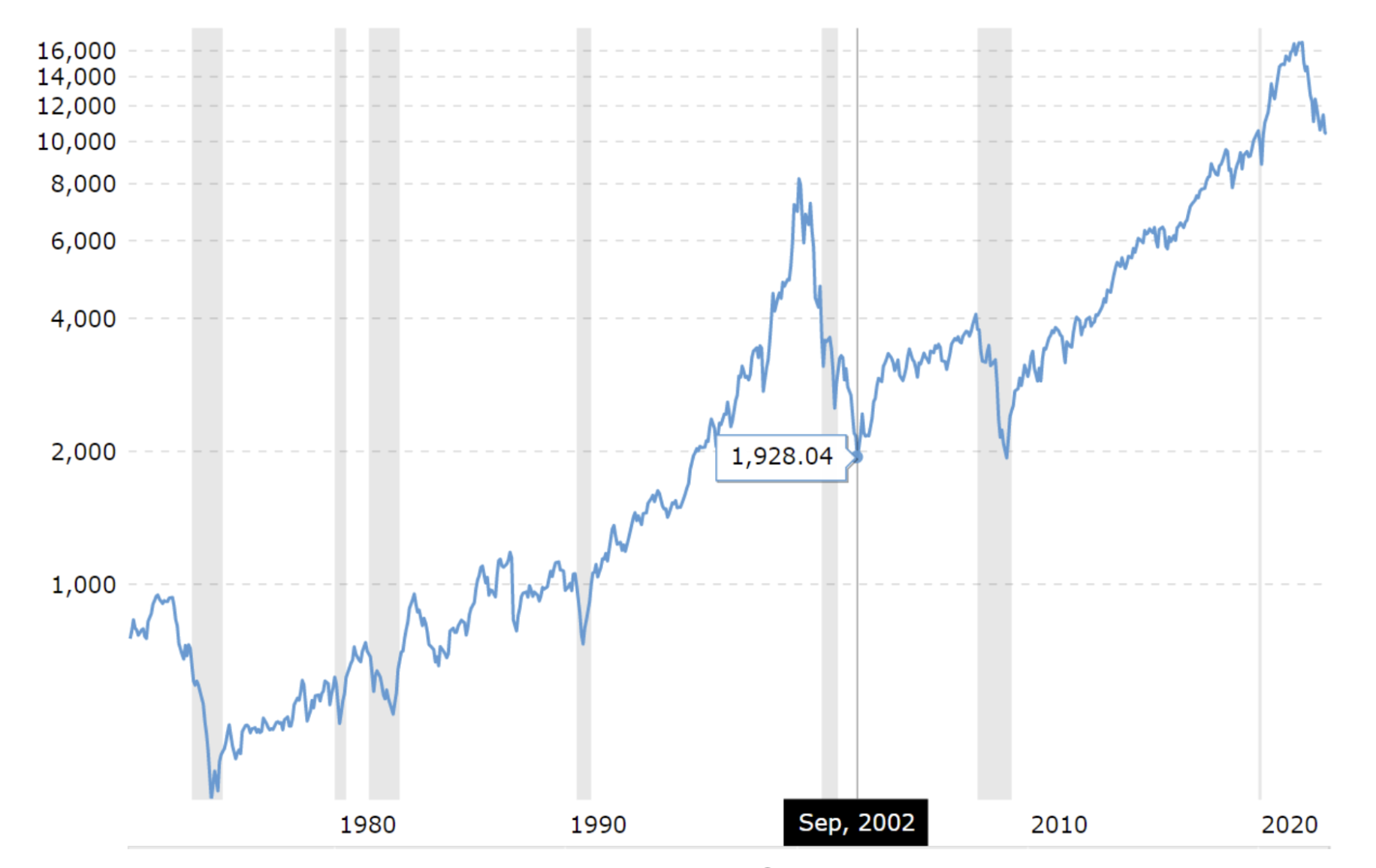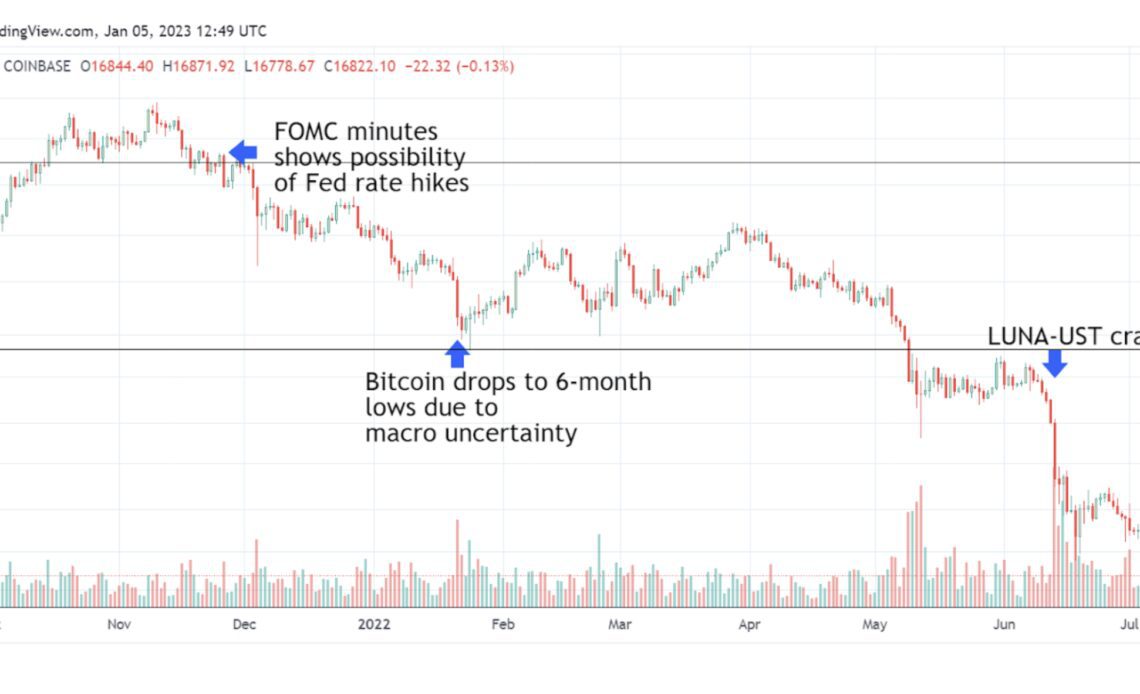Undoubtedly, 2022 was one of the worst years for Bitcoin (BTC) buyers, primarily because the asset’s price dropped by 65%. While there were some explicit reasons for the drop, such as the LUNA-UST crash in May and the FTX implosion in November, the most important reason was the U.S. Federal Reserve policy of tapering and raising interest rates.
Bitcoin’s price had dropped 50% from its peak to lows of $33,100 before the LUNA-UST crash, thanks to the Fed rate hikes. The first significant drop in Bitcoin’s price was due to growing market uncertainty around potential rate hike rumors in November 2021. By January 2022, the stock market had already started showing cracks due to the increasing pressure of imminent tapering, which also negatively impacted crypto prices.
Fast forward year, and the crypto market continues to face the same problem, where the headwinds from the Fed rate hikes have restricted substantial bullish moves. The worst part is that this regime may last much longer than the marketparticipants expect.
Clues emerge from the 1990s dot-com bubble
The dot-com bubble of 1999-2000 could teach investors a lot about the current crypto winter, and it continues to paint a grim picture for2023.
The tech-heavy Nasdaq Composite inflated to enormous levels by the early 2000s and this bubble burst when the Fed began raising interest rates in 1999 and 2000. As credit became more expensive, the amount of easy money shrank in the market, causing the Nasdaq to drop from its peak by 77%.

The crypto market is currently facing the same scenario.
Fed chairman Jerome Powell is hell-bent on curbing inflation and this means there will behigher rates for some time ahead. Minneapolis Federal Reserve President Neel Kashkari wrote in a blog post recently that he expects the terminal rates to go up to 5.4% by June 2023 —currently, the rates are in the 4.25% to 4.50% range.
Notably, at the time of the dot-com bubble, the Fed stopped increasing rates in May 2000, but the downturn in Nasdaq continued for the next two years. Thus, we can expect the crypto market to drop further at least until the Fed pivots. There is a risk of the current bear market stretching even longer if the U.S. economy experiences a recession similar to 2001.
Increasing signs of recession
According to a report by Mises Institute analyst Ryan McMaken, the M2 money supply of the U.S. dollar turned negative in…
Click Here to Read the Full Original Article at Cointelegraph.com News…
























